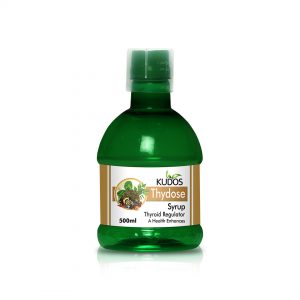Thyroid Management in the Elderly Population: Challenges and Best Practices
Thyroid symptoms are common in the elderly population, with an estimated prevalence of up to 20%. These disorders can be classified into hypothyroidism, hyperthyroidism, and nodules. Hypothyroidism is the most prevalent disorder, affecting up to 10% of individuals over the age of 70. Hyperthyroidism affects up to 1% of the elderly population, and nodules are prevalent in up to 50% of individuals over the age of 60.
Managing disorders in the elderly presents a unique set of challenges. The aging process can cause changes in function and hormone levels, which can complicate diagnosis and treatment. Additionally, many elderly individuals have coexisting medical conditions, such as cardiovascular disease or cognitive impairment, that can impact the management of their disorder. Medication management can also be challenging, as older adults are often taking multiple medications for various health issues, and drug interactions can occur.
Furthermore, symptoms can be nonspecific or attributed to other age-related conditions, making it difficult to diagnose and manage the disorder effectively
Thyroid symptoms

Symptoms can vary depending on the type and severity of the disorder. The gland is responsible for producing hormones that regulate metabolism and affect virtually every cell in the body. When the gland produces too much or too little of these hormones, it can result in a variety of symptoms, including:
-
Hypothyroidism:
When the gland generates insufficient hormone, hypothyroidism develops. Symptoms can include fatigue, weight gain, cold intolerance, dry skin, hair loss, constipation, depression, and difficulty concentrating.
-
Hyperthyroidism:
When the gland generates too much hormone, hyperthyroidism develops. Symptoms can include weight loss, increased appetite, heat intolerance, sweating, tremors, palpitations, irritability, anxiety, and insomnia.
-
Thyroid nodules:
Nodules on the gland are abnormal growths. Most nodules are benign and do not cause symptoms, but some may be cancerous or cause compression of nearby structures, resulting in symptoms such as difficulty swallowing or breathing, hoarseness, or neck pain.
-
Thyroid cancer:
Thyroid cancer can also present with a variety of symptoms, including a lump or swelling in the neck, pain in the neck or throat, difficulty swallowing or breathing, and hoarseness.
Challenges Of Thyroid Management In The Elderly Population
-
Prevalence of disorders in the elderly population:
The prevalence of disorders increases with age, and the elderly population is at higher risk for developing problems. Hypothyroidism is the most common disorder in the elderly, affecting about 10-20% of people over the age of 60. On the other hand, hyperthyroidism is less common but still a significant concern.
-
Age-related changes in function:
As people age, their function changes, leading to a decrease in the production of hormones. This can result in hypothyroidism, a condition in which the gland doesn’t produce enough hormones. Also, older people may develop nodules in their gland, which can be benign or malignant.
-
Comorbidities and medications that affect function:
The elderly population often has multiple comorbidities and takes multiple medications, which can affect function. For example, certain medications, such as amiodarone, lithium, and interferon, can cause dysfunction. Other medical conditions, such as diabetes, can also affect function.
-
Difficulty in diagnosing disorders in the elderly:
Diagnosing disorders in the elderly can be challenging, as symptoms can be nonspecific and similar to those of other medical conditions.
Best Practices For Thyroid Management In The Elderly Population
Screening and diagnosis of disorders in the elderly:
- Laboratory testing: Function tests should be routinely performed in elderly patients who present with nonspecific symptoms such as fatigue, weight changes, or mood disturbances. In addition to measuring hormone levels, tests for antibodies and ultrasound imaging may be required to further evaluate function and detect nodules.
- Clinical evaluation: A comprehensive clinical evaluation should be performed, including a review of the patient’s medical history, medication list, and family history of disorders. A physical examination should also be conducted, with particular attention to the gland’s size, consistency, and nodularity.
Treatment of disorders in the elderly:
- Hypothyroidism: Treatment of hypothyroidism in the elderly population typically involves hormone replacement therapy with levothyroxine. The starting dose should be low, with close monitoring of hormone levels and clinical symptoms to avoid overtreatment, which can lead to adverse cardiovascular and bone health outcomes.
- Hyperthyroidism: Treatment options for hyperthyroidism in the elderly include anti medications, radioactive iodine therapy, and surgery. The choice of treatment should be based on the patient’s comorbidities, medication list, and individual preferences.
- Thyroid nodules and cancer: Nodules in the elderly population are common, and most are benign. However, thyroid cancer is more prevalent in older individuals, and any nodules that grow or show suspicious features on ultrasound imaging should be further evaluated with fine-needle aspiration biopsy.
Monitoring and follow-up of elderly patients with disorders:
Elderly patients with disorders should be regularly monitored for clinical symptoms, hormone levels, and adverse effects of treatment. Follow-up testing should be performed at intervals appropriate for the patient’s condition and comorbidities. Patients with thyroid cancer should be monitored closely for recurrence or metastasis and may require lifelong surveillance.
Conclusion
Thyroid management in the elderly population presents unique challenges, including the high prevalence of disorders, age-related changes in function, comorbidities and medications that affect function, difficulty in diagnosis, and special considerations for elderly patients with thyroid cancer. Best practices for thyroid management in the elderly population include individualized screening and diagnosis with laboratory testing and clinical evaluation, treatment tailored to the patient’s condition and comorbidities, and regular monitoring and follow-up.
Disorders are prevalent in the elderly population, and effective management requires a patient-centered approach that considers the individual’s comorbidities, medications, and preferences. Healthcare providers should work collaboratively to ensure optimal management of disorders in the elderly, with a focus on personalized screening, diagnosis, and treatment. As the elderly population continues to grow, it is essential to prioritize research and innovation in management to improve outcomes for this vulnerable population.
Recommended Thyroid Medicine
Thyroid medication plays a crucial role in managing various conditions and restoring normal hormone levels in the body. The gland, located in the neck, produces hormones that regulate metabolism, growth, and development.




